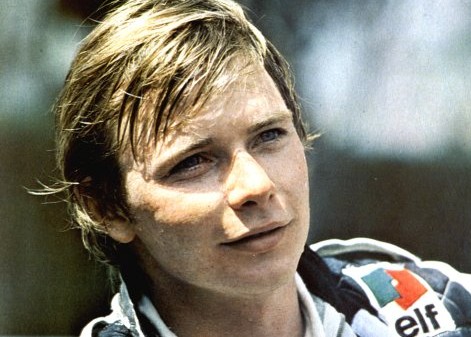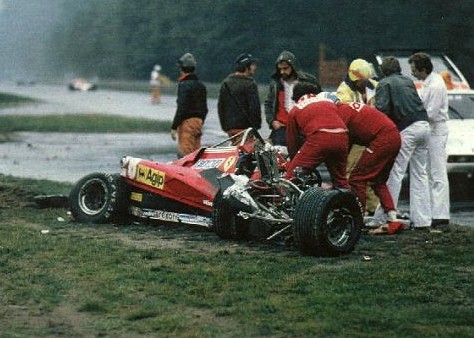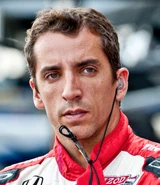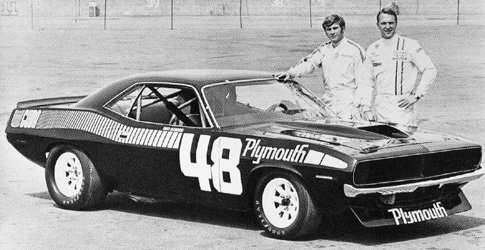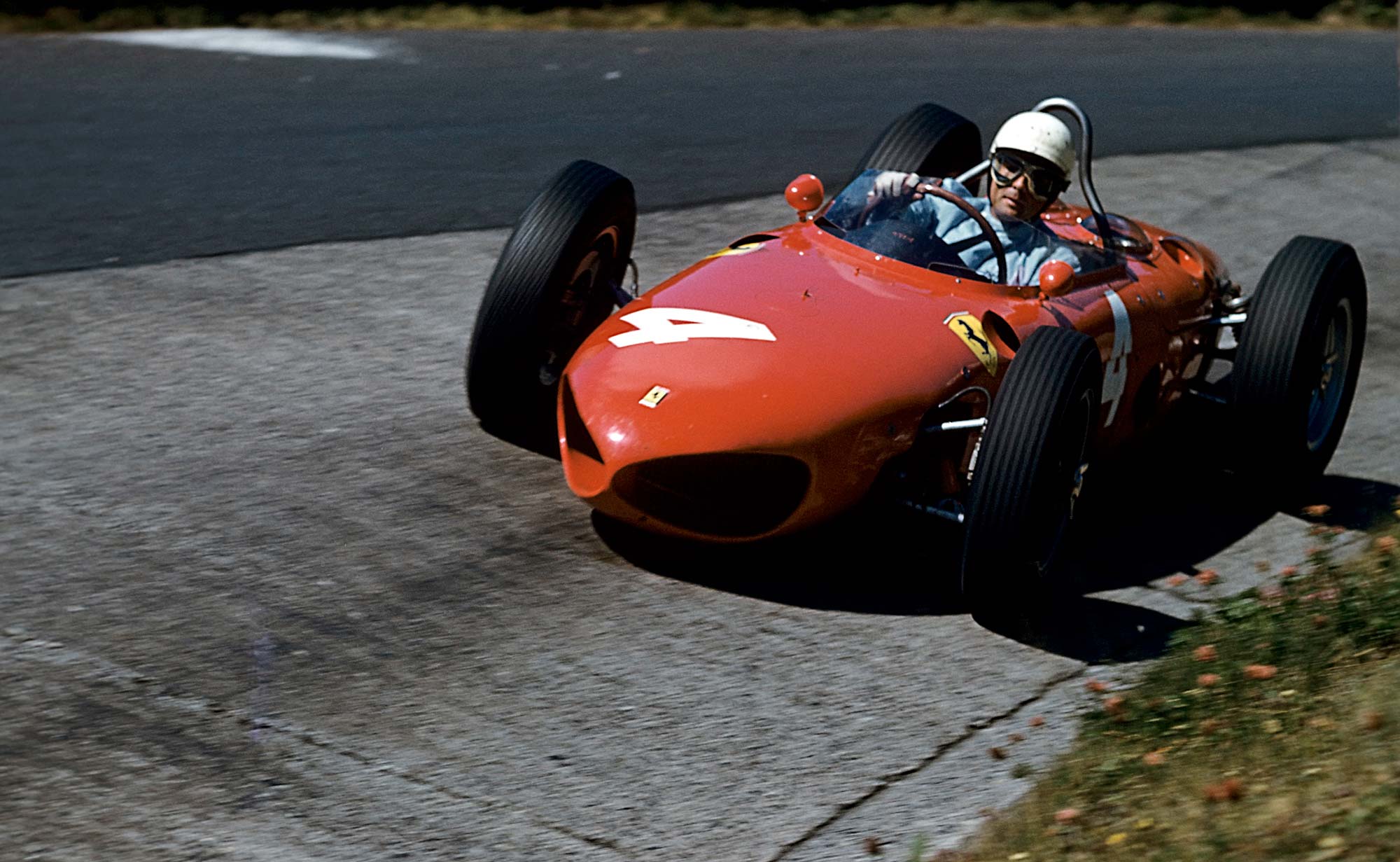July 31, 1978 - August 24, 2015
Justin Wilson
Born in Sheffield, England.
Wilson began racing karts in 1987. During the early 1990s, he spent several years in Formula Vauxhall with Paul Stewart Racing before earning international attention when he won the inaugural Formula Palmer Audi championship with nine race wins. In 1998, he was a finalist in the McLaren Autosport BRDC Young Driver of the Year Award. A year later, he graduated to the FIA International Formula 3000 championship and won the championship in 2001, setting a record winning margin in the process.
Despite his success, his height proved a liability, and prevented him from securing a Formula One drive for 2002. To date, he is the tallest person to have raced in Formula One. He found a drive in the Telefónica World Series by Nissan, where he continued his winning ways with race victories at Interlagos and Valencia. Wilson also tested for the Minardi Formula One team, but although regular driver Alex Yoong was replaced for two rounds, Wilson was unable to race the car due to his height.
For 2003, Minardi designed the car around Wilson's 6 ft 4 in frame and signed him up to race. The car was off the pace but Wilson performed favourably against his more experienced teammate, Jos Verstappen. He switched to Jaguar Racing to replace Antônio Pizzonia for the last five races of the season, and scored his first championship point at the United States Grand Prix. However, Wilson did not retain his position with Jaguar Racing, because Ford was not prepared to pour unlimited funds into Formula One and advised the team that they would have to take on a paying driver.
At the beginning of 2004, Wilson joined the Champ Car World Series with Mi-Jack Conquest Racing. He qualified as high as second in his rookie season and finished the year in 11th place in the standings. In addition to Champ Cars, Wilson also raced at the famous 24 Hours of Le Mans endurance race, sharing the Racing for Holland Dome-Judd S101 with Tom Coronel and Ralph Firman, personally setting the fifth fastest lap.
In 2005, Wilson moved to the RuSPORT team to partner with A. J. Allmendinger. He won his first Champ Car race at Toronto. Continuing with his success in Canada, Wilson finished third at Montreal, then rounded off the year with a victory from pole in the final race of the season at the Mexico City circuit. Wilson finished the season in third place in the drivers' standings behind series champion Sébastien Bourdais and second-placed Oriol Servia.
In 2006, Wilson took part in the Rolex 24 Hours of Daytona event for the first time in his career, racing for the Michael Shank Racing team in a Lexus powered Riley & Scott Daytona Prototype chassis. Teaming up with Champ Car teammate A. J. Allmendinger, Oswaldo Negri and Mark Patterson, the car made it to the chequered flag in second place. Wilson stayed with RuSPORT for the 2006 Champ Car season, and finished second in the series. On October 19, 2006, in the Friday qualifying for the Surfers Paradise race, Wilson hit a small barrier of tyres in a chicane. When the front wheels lurched sideways after the impact, the steering wheel spun sharply in Wilson's hands and broke a small bone in his right wrist.
For 2007, Wilson was signed on a multi-year contract with RSPORTS, a merger of his former team and Rocketsports. He finished second in the championship. Preceding the European rounds of the championship, RSPORTS announced their separation back into RuSport and Rocketsports.
In 2008 Wilson again drove in the Rolex Daytona 24 Hours race for Michael Shank Racing, this time in a Ford powered Riley prototype chassis. He shared the number 60 car with Oswaldo Negri, Mark Patterson and Graham Rahal, they finished the race in sixth position and were the highest placed Ford powered car. Wilson signed for reigning ChampCar champions Newman/Haas/Lanigan Racing for 2008, replacing Sébastien Bourdais. The ChampCar series merged with the Indy Racing League for 2008, meaning that Wilson and team-mate Graham Rahal competed in the IndyCar Series. Wilson qualified on pole for the Long Beach Grand Prix and second at Edmonton. Wilson won his first race for NHLR and took his maiden IndyCar Series win at the Detroit Indy Grand Prix in late August.
Wilson agreed to drive for Dale Coyne Racing in 2009, after losing his ride at Newman/Haas/Lanigan Racing. Wilson qualified second for the 2009 Honda Grand Prix of St. Petersburg to start the season, which is Coyne's best qualifying result in the team's 23-year history. He finished the race in third position, set the fastest lap of the race and led the most laps. Wilson was leading before a late-race caution came out; eventual race winner Ryan Briscoe passed him on the restart.
On July 5, 2009, Wilson scored his second IndyCar Series win, and Dale Coyne's first victory as an owner in his team's 23-year history. At the 2009 Camping World Grand Prix at the Glen, Wilson again qualified second, only behind Briscoe, who set a new track record twice over the course of qualifying. Because Dario Franchitti crashed early in the final round of qualifying, Wilson was able to save a set of Firestone's alternate-compound tires, which are designed to make the car faster, but also wear out more quickly. Wilson was the fastest driver in final practice. In the race itself, Wilson attempted to pass Briscoe on the second lap, but was unsuccessful; two laps later, he made the pass stick, leading the first of 49 laps he spent in front. With six laps remaining in the 60-lap event, a full-course caution came out, resulting in the same setup as St. Petersburg: Wilson leading late, with Briscoe right behind him. This time, however, Wilson retained the lead, stretching it to 4.9 seconds by the end of the race.
Wilson took part in the 2010 running of the Daytona 24 Hours race. This time he was racing for Chip Ganassi Racing with Felix Sabates in the Telmex/Target sponsored 01 Riley BMW prototype. Wilson shared the car with Max Papis, Scott Pruett and Memo Rojas, the car finished the race on the lead lap in second place.[14] During the race in an interview with Speed TV Wilson confirmed he was still working on a drive in the 2010 IndyCar season, saying he hoped to have a deal arranged "in the next few weeks".
On February 2, 2010, it was announced that Wilson would be joining Dreyer & Reinbold Racing for the 2010 IndyCar season, he drove the No. 22 Z-Line Designs sponsored car and was partnered by Mike Conway. Wilson begun the season well in the road and street courses, often running near the front, finishing second in both the Honda Grand Prix of St. Petersburg and the Long Beach Grand Prix. He ran in the lead towards the end of the Indy 500 setting the fastest out lap of all the drivers during the race. Wilson won the pole in Toronto but fell to seventh in the race. Wilson finished the season eleventh in points.
In 2011, Wilson had a difficult season. He had just captured a season best finish of fifth at Edmonton, when he injured his back when his car was launched into the air after running off course at the Mid-Ohio Sports Car Course during a practice session. He was unable to complete the remaining four races of the season.
On January 28-29, 2012, Wilson and co-drivers AJ Allmendinger, Oswaldo Negri and John Pew won the 50th Rolex 24 at Daytona, driving the No. 60 Michael Shank Racing Riley MkXXVI Ford Daytona Prototype. It was his first Rolex 24 win. Also in 2012, driving for Dale Coyne Racing, Wilson captured the team's first and his first oval victory at Texas Motor Speedway, although unapproved bodywork was found on Wilson's car during post-race inspection, the win was allowed to stand, with Wilson being docked five points and the team being fined. The result would be by far his best of the season and he finished fifteenth in points.
Wilson returned to the podium with Michael Shank Racing at Daytona in 2013, after he and co-drivers John Pew, Ozz Negri, Marcos Ambrose, and AJ Allmendinger recovered from being several laps down to finish third in the race. In 2013 Wilson returned to Dale Coyne Racing. He finished on the podium four times and finished sixth in the championship, his best IndyCar series points result since the merger with Champ Car. Wilson also captured his best career Indy 500 finish of fifth in the 2013 race. In 2014 Wilson again returned to the Coyne team, but failed to reach the podium and finished fifteenth in points.
Wilson was a free agent at the beginning of the 2015 IndyCar Series season when Andretti Autosport announced that they had signed him to compete with them in the Grand Prix of Indianapolis and 2015 Indianapolis 500. After those races, Wilson was again on the sidelines until July 7, 2015, when Andretti announced that Wilson would compete in the final five races of the season with the team. Wilson finished on the podium in second at Mid-Ohio.
Wilson was fatally injured in an accident during the ABC Supply 500 at Pocono Raceway on August 23, 2015. Race leader Sage Karam crashed late in the race, sending debris airborne. The nose cone from Karam's crashed car hit Wilson's helmet as he drove through the accident scene, and Wilson's car immediately veered left into the inside wall. Wilson was extricated from his car and airlifted to Lehigh Valley Hospital in Allentown. He was subsequently reported to be in a coma, and died the following day. Tributes poured in from across the motorsport world following Wilson's death from Nigel Mansell, Jenson Button and fellow Indy driver Dario Franchitti.
Wilson married girlfriend Julia in Sheffield, England on December 29, 2006. The couple resided in Northampton, England and in Longmont, Colorado. They had two daughters, named Jane Louise and Jessica Lynne. Wilson's younger brother, Stefan, is also a racing driver. Stefan made his first IndyCar start in the 2013 Grand Prix of Baltimore driving alongside Justin for Dale Coyne Racing. It was the first time brothers had raced in IndyCar as teammates since Gary Bettenhausen and Tony Bettenhausen, Jr. in 1983.














